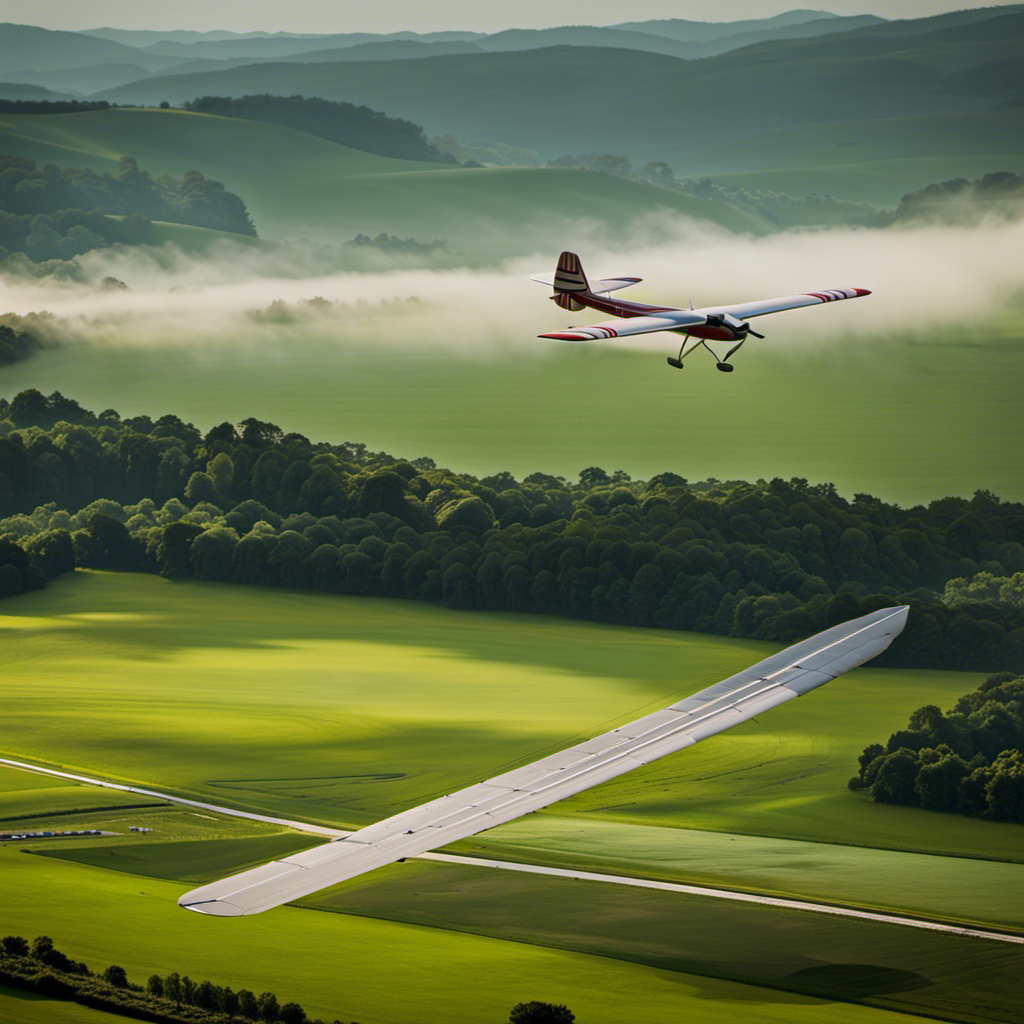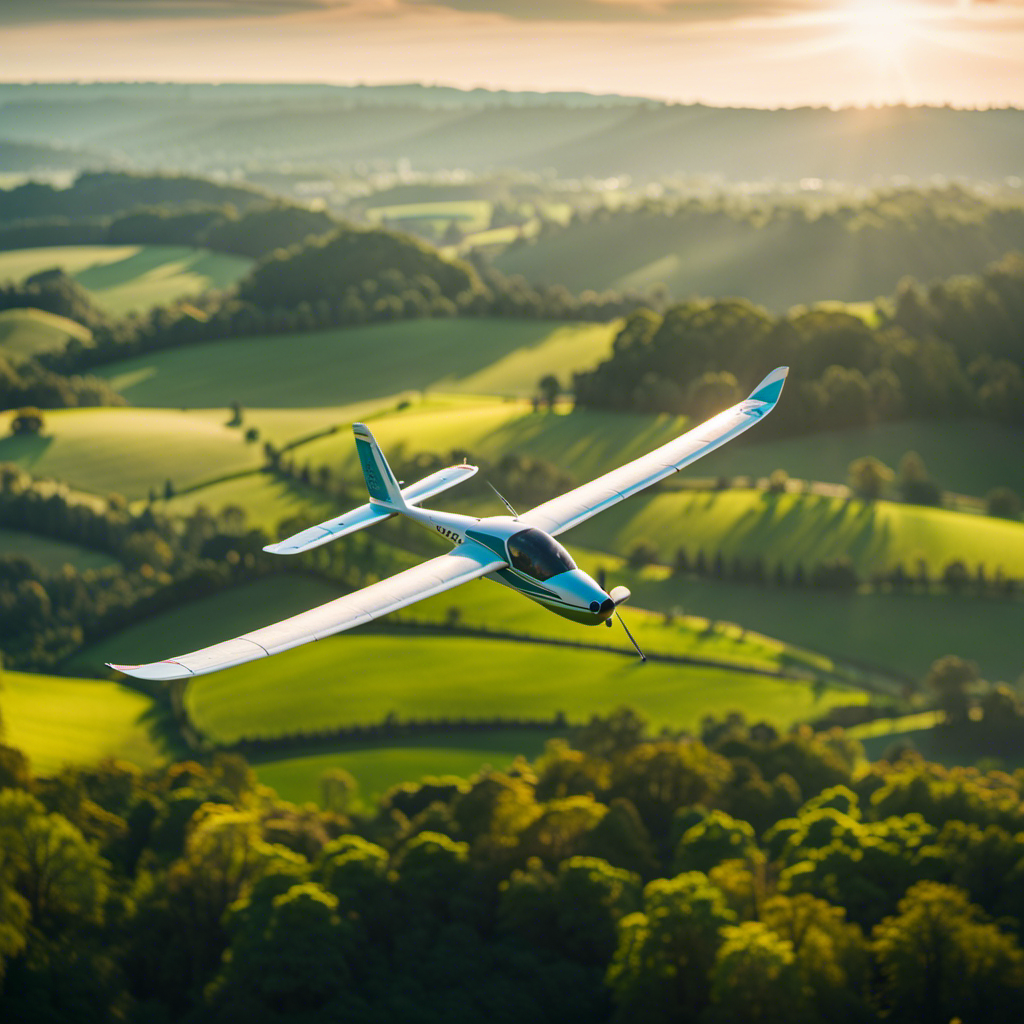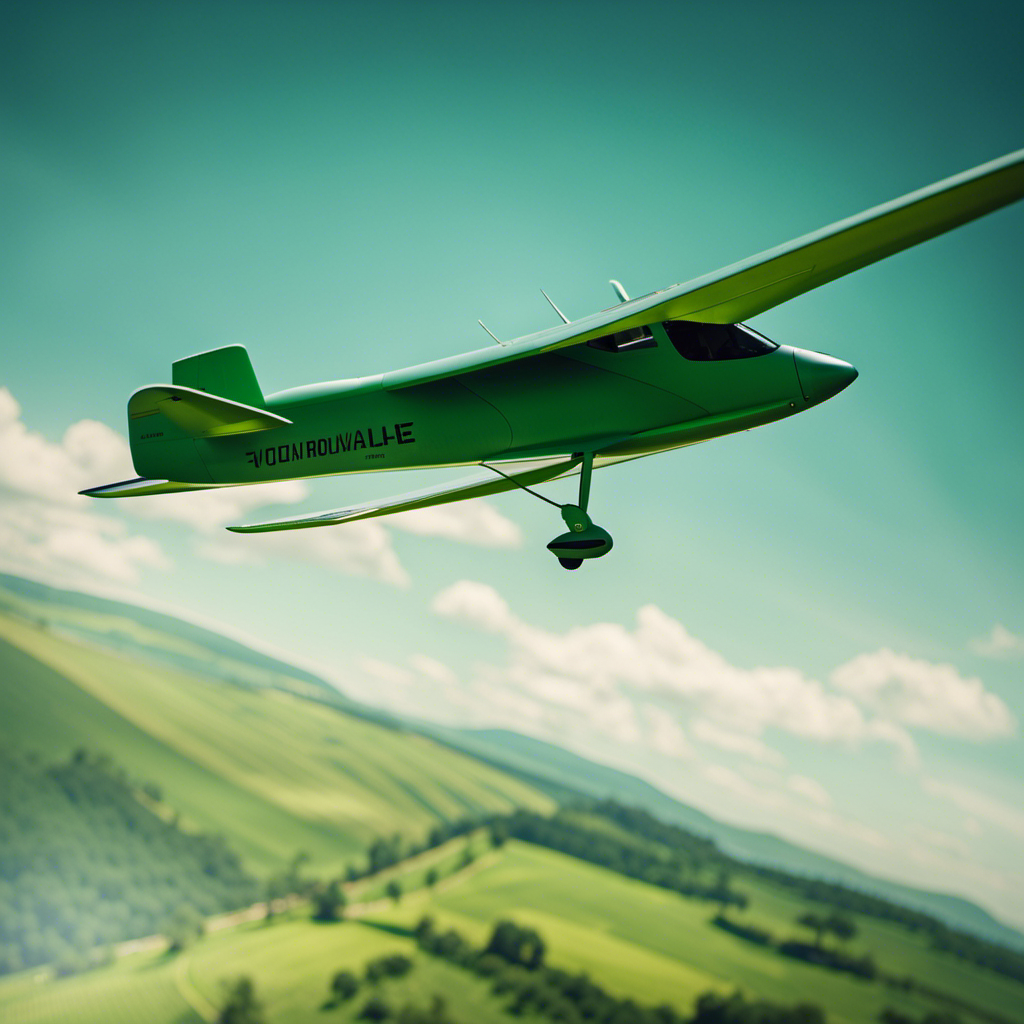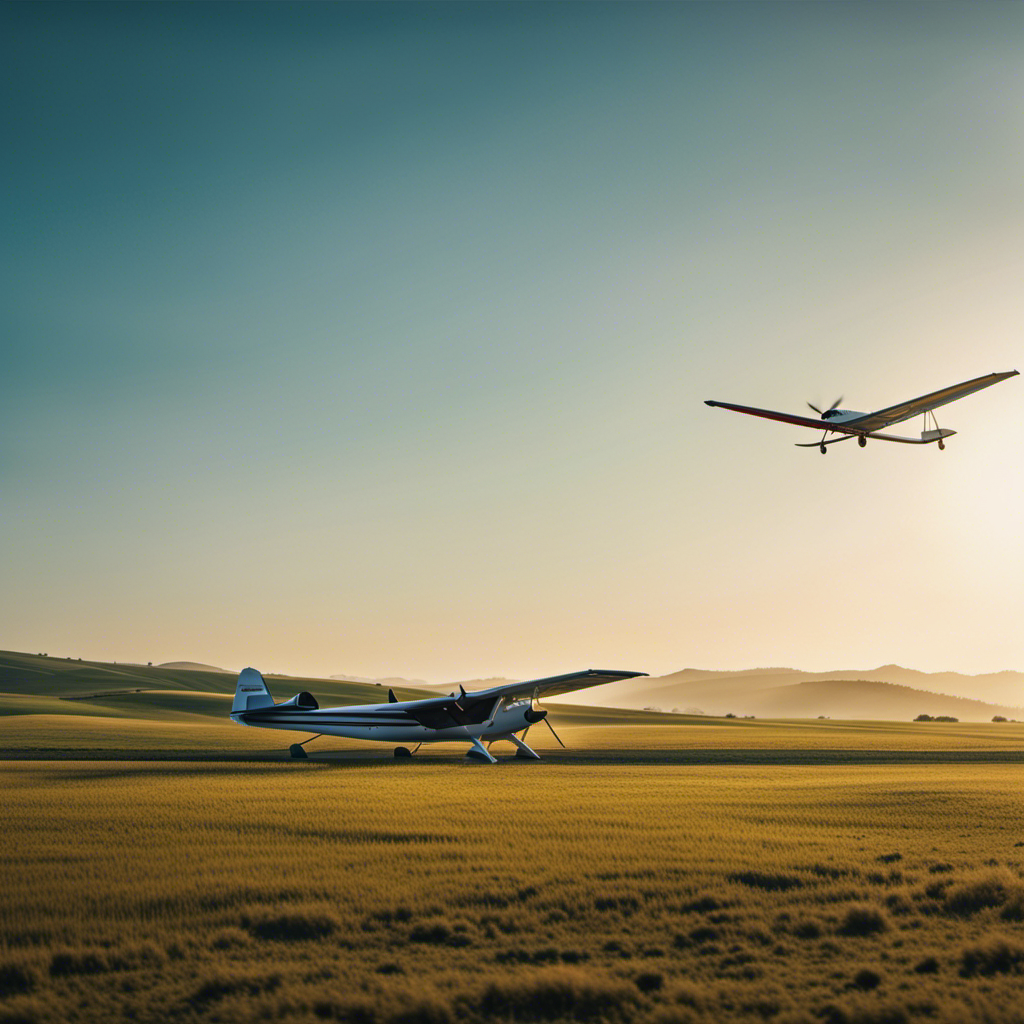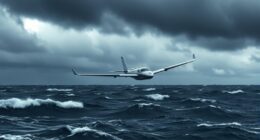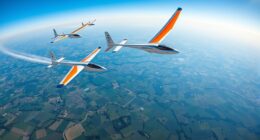You may feel intimidated by the idea of becoming skilled at landing a glider. However, fear not, as in this article, I will guide you through each step to help you master the technique of glider landings with a practical approach.
By understanding the principles of glider flight, mastering speed and altitude control, and learning to read wind conditions, you’ll be well on your way to becoming a skilled glider pilot.
So let’s dive in and discover the secrets to achieving smooth and efficient glider landings.
Key Takeaways
- Enhancing spatial awareness and depth perception is crucial for confident and precise landings.
- Fine-tuning crosswind landing skills involves adjusting the approach angle and using appropriate control inputs to counteract drift.
- Mastering emergency landing techniques involves quickly selecting a suitable landing area, executing a controlled descent and landing, and regularly training in simulated emergency scenarios.
- Utilizing simulators and flight training tools, such as realistic glider simulators and virtual reality systems, can help improve emergency landing skills.
Understand the Principles of Glider Flight
Understanding the principles of glider flight is essential for perfecting landing techniques. As a glider pilot, I’ve learned that these principles are rooted in the principles of aerodynamics and glider flight dynamics.
By understanding how these principles work together, I’m able to navigate the skies with precision and authority.
Principles of aerodynamics play a crucial role in glider flight. Lift, drag, and weight are the key forces that affect the glider’s movement through the air. Lift is generated by the shape of the wings and allows the glider to stay airborne. Drag, on the other hand, resists the glider’s forward motion and is influenced by factors such as air density and the glider’s shape. Weight, simply put, is the force exerted by gravity on the glider. By manipulating these forces, I can control the glider’s movement and maintain stability.
Glider flight dynamics also contribute to a smooth landing. Factors such as weight and balance, center of gravity, and control inputs must be carefully managed. Maintaining proper weight and balance ensures that the glider remains stable during flight. The center of gravity, which is the point where the glider’s weight is concentrated, must be within a specific range for optimal performance. Finally, precise control inputs, such as adjusting the elevator and ailerons, allow me to control the glider’s pitch, roll, and yaw.
Understanding these principles sets the foundation for mastering speed and altitude control. By effectively managing these two variables, I’m able to execute safe and smooth landings.
Master Speed and Altitude Control
To master speed and altitude control, you’ll need to focus on maintaining a steady descent and adjusting your glider’s pitch accordingly. Here are some key techniques to help you with speed and altitude management during glider landings:
-
Maintain a consistent airspeed: It is crucial to keep a steady airspeed during descent. Adjust the pitch to control the glider’s speed and prevent it from gaining or losing altitude too quickly.
-
Use flaps effectively: Utilize the flaps on your glider to modify its lift and drag characteristics. Deploying flaps can reduce speed and increase descent rate, allowing for a smoother landing.
-
Monitor vertical speed indicator: Keep a close eye on the vertical speed indicator to maintain a controlled descent rate. Adjust the pitch as necessary to achieve the desired rate of descent.
-
Plan your approach: Plan your approach to the landing area in advance, considering factors such as wind direction and obstacles. This will help you maintain a suitable glide path and adjust your speed and altitude accordingly.
Learn to Read and Utilize Wind Conditions
When it comes to reading and utilizing wind conditions, you’ll need to pay close attention to the direction and intensity of the wind to make informed decisions during your glider landings. Wind reading techniques and wind utilization strategies are crucial for a safe and successful landing. Let’s take a look at some key techniques and strategies in the table below:
| Technique | Description | Importance |
|---|---|---|
| Windsock Observation | Observing the windsock for wind direction and speed. | Essential |
| Wind Indicators | Utilizing visual cues like dust, leaves, and ripples on water to gauge wind intensity. | Helpful |
| Weather Reports | Studying local weather reports for wind forecasts and changes. | Critical |
By mastering these wind reading techniques, you can effectively utilize wind conditions to your advantage during glider landings. Understanding wind direction allows you to adjust your approach path, ensuring a smooth touchdown. Additionally, being aware of wind intensity enables you to make necessary corrections to your speed and altitude, preventing overshooting or undershooting the landing zone.
Now that you’ve learned how to read and utilize wind conditions, the next crucial step is to practice efficient communication with air traffic control. By effectively communicating your intentions and following ATC instructions, you can ensure a seamless transition from the sky to the ground, enhancing safety and cooperation in the airspace.
Practice Efficient Communication with Air Traffic Control
Now that you’ve learned how to read and utilize wind conditions, it’s important to practice efficient communication with air traffic control.
Effective ATC communication is crucial for a safe and successful glider landing. As a glider pilot, it’s essential to convey your position, intentions, and any potential hazards to the ATC. By following efficient communication techniques, you can ensure that you are understood clearly and that there are no misunderstandings or miscommunications.
To communicate effectively with air traffic control, use concise and precise language. Keep your radio transmissions brief and to the point, avoiding unnecessary information. Speak clearly and at a moderate pace, ensuring that your message is easily understood. It’s also important to listen carefully to the instructions given by the ATC and acknowledge them promptly.
By practicing efficient communication with air traffic control, you can maintain a smooth flow of information and ensure that everyone involved is on the same page. This will greatly contribute to the overall safety and efficiency of your glider landing.
As you develop a smooth approach and flare technique, you will need to have effective ATC communication in place. This will help you in coordinating your landing with the air traffic control, ensuring a seamless and safe transition from the air to the ground.
Develop a Smooth Approach and Flare Technique
As you refine your approach and flare technique, focus on maintaining a steady glide path and smoothly transitioning from descent to level flight. A smooth approach is essential for a successful landing, ensuring a controlled and precise touchdown. Here are some key points to consider:
-
Maintain a constant descent rate: By adjusting your airspeed and pitch angle, you can control the rate of descent. Aim for a steady descent, avoiding abrupt changes in altitude, which can disrupt the smoothness of the approach.
-
Monitor your glide path: Keep a close eye on your height above the ground and adjust your approach accordingly. Avoid descending too steeply or shallowly, as this can lead to a rough landing or overshooting the intended touchdown point.
-
Master the flare technique: The flare is the final adjustment you make just before touchdown. Gradually increase the pitch angle to reduce the rate of descent and allow the glider to level off smoothly. This technique helps to dissipate excess energy and ensures a gentle touchdown.
By focusing on these aspects of your approach and flare technique, you can enhance your spatial awareness and depth perception, further improving your landing skills.
Understanding how to smoothly transition from descent to level flight and mastering the flare technique are crucial elements of a successful glider landing.
Enhance your Spatial Awareness and Depth Perception
By focusing on enhancing your spatial awareness and depth perception, you can improve your overall landing skills in a glider.
Spatial awareness exercises are crucial in developing a keen sense of your surroundings while flying. One effective exercise is to practice identifying specific landmarks on the ground from various altitudes and angles. By repeatedly performing this exercise, you train your brain to quickly process visual information and accurately judge distances.
Additionally, depth perception techniques play a vital role in determining your position relative to the runway during the final approach. One technique involves using your peripheral vision to gauge the distance between the glider and the runway. By maintaining a constant awareness of the runway’s position in your peripheral vision, you can adjust your descent rate and glide path accordingly.
Furthermore, incorporating depth perception exercises, such as flying over objects of known height, can help fine-tune your ability to accurately judge distances.
By enhancing your spatial awareness and depth perception, you will be better prepared to confidently execute smooth and precise landings in any gliding situation.
Now, let’s delve into how to fine-tune your crosswind landing skills.
Fine-tune Your Crosswind Landing Skills
To improve your crosswind landing skills, it’s important to practice adjusting your approach angle and using appropriate control inputs.
In order to refine your technique and improve control during crosswind landings, there are a few key aspects to consider.
Firstly, it’s crucial to adjust your approach angle to compensate for the crosswind. This means that you need to aim for a slightly different touchdown point compared to a normal landing. By aligning your approach with the runway centerline, you can counteract the drift caused by the crosswind and maintain a stable path.
Secondly, using appropriate control inputs is essential. As you approach the runway, you should maintain a steady heading by using the rudder to counteract the yaw induced by the crosswind. Additionally, you may need to apply some aileron input to keep the wings level and prevent the glider from drifting too far off course.
By practicing these techniques, you can refine your crosswind landing skills and gain better control over your glider. This will not only enhance your overall flying ability but also prepare you for a variety of landing scenarios, including emergency situations where quick thinking and precise control are crucial.
Learn to Handle Emergency Landing Situations
After honing our crosswind landing skills, it is imperative to shift our focus towards mastering emergency landing techniques. As glider pilots, we must be prepared to handle unexpected situations and make split-second decisions that can mean the difference between life and death. To ensure glider landing safety, it is crucial that we are well-versed in the necessary emergency procedures.
One of the primary emergency landing techniques to learn is selecting a suitable landing area. In the event of an emergency, we must quickly assess the terrain below us, considering factors such as surface conditions, obstructions, and accessibility for rescue services. Additionally, we need to practice executing a controlled descent and landing without compromising the safety of ourselves and others.
Furthermore, it is essential to familiarize ourselves with emergency equipment, such as parachutes and emergency locator transmitters, ensuring they are in proper working order and easily accessible. Regular training exercises should be conducted to simulate emergency scenarios and practice the necessary procedures.
By honing these emergency landing techniques, we can enhance our ability to handle unexpected situations and protect ourselves and our passengers.
In the subsequent section, we will explore how to utilize simulators and flight training tools for practice, further refining our skills and ensuring our readiness in emergency situations.
Utilize Simulators and Flight Training Tools for Practice
Make sure you take advantage of simulators and flight training tools to practice and improve your emergency landing skills. Simulators offer several benefits that can greatly enhance your training experience:
-
Realistic Replication: Simulators provide an accurate representation of the glider’s behavior during emergency landing situations. They replicate various flight conditions, allowing you to practice different scenarios and hone your decision-making skills.
-
Risk-Free Environment: With simulators, you can practice emergency landings without any real-world risks. This enables you to experiment with different techniques, learn from mistakes, and build confidence in your abilities.
In addition to simulators, there are various training tool options available to further enhance your practice sessions:
-
Virtual Reality (VR) Systems: VR systems provide an immersive experience, allowing you to feel like you are actually in the cockpit. They offer a high level of realism and can simulate emergency situations with remarkable accuracy.
-
Flight Training Software: These software programs provide interactive tutorials, flight scenarios, and virtual flight instructors. They offer a structured learning environment and allow you to track your progress over time.
Seek Guidance and Feedback from Experienced Glider Pilots
Get invaluable guidance and feedback from experienced glider pilots to enhance your emergency landing skills and ensure you’re well-prepared for real-life scenarios. Learning from those who have mastered the art of glider landings is an essential step in perfecting your own techniques. These experienced pilots have valuable advice and tips to share, which can significantly improve your landing abilities.
One important aspect to consider is approach and landing speed. Experienced pilots emphasize the importance of maintaining the correct airspeed throughout the landing phase. It is crucial to manage your speed effectively to ensure a safe and controlled touchdown. Additionally, they recommend keeping a close eye on wind conditions and adjusting your approach accordingly. Wind can greatly affect your glider’s flight path, so being aware of its impact is essential for a smooth landing.
Furthermore, experienced pilots stress the significance of practicing emergency landing techniques. They advise aspiring glider pilots to regularly practice simulated emergency landings to develop their muscle memory and decision-making skills. These practice sessions allow pilots to familiarize themselves with the necessary steps to take in case of an unexpected situation during a real flight.
Frequently Asked Questions
What is the recommended frequency for communication with air traffic control during glider flights?
The recommended frequency for communication with air traffic control during glider flights is determined by the specific airspace and regulations in place. Pilots should adhere to the designated communication frequency to ensure safe and efficient operations.
Are there any specific flight training tools or simulators that are highly recommended for practicing glider landing techniques?
Flight simulators are highly recommended for landing practice in gliders. They provide a realistic environment to hone landing techniques. Using these tools, pilots can perfect their skills and gain confidence before executing actual landings.
How can glider pilots enhance their depth perception skills for better landing accuracy?
To enhance depth perception and improve landing accuracy in gliders, pilots can practice visual scanning techniques, utilize depth cues such as shadows and texture gradients, and train with simulators that simulate real-world landing scenarios.
Are there any common mistakes or pitfalls to avoid when handling emergency landing situations in gliders?
Common mistakes to avoid in glider emergency landings include misjudging the landing site, failing to assess wind conditions properly, and neglecting to use emergency landing techniques such as the forward slip and side slip. Techniques for effective glider emergency landings involve maintaining airspeed and control, selecting a suitable landing area, and executing a proper flare and touchdown.
How long does it typically take for a glider pilot to become proficient in crosswind landing skills?
Becoming proficient in crosswind landing skills as a glider pilot typically takes several months of consistent practice. For example, I have seen pilots improve significantly after dedicating around 50 hours of flight time to mastering this technique.
Conclusion
In conclusion, perfecting glider landing techniques requires a practical and disciplined approach. By understanding the principles of glider flight, mastering speed and altitude control, and learning to read wind conditions, pilots can ensure safe and efficient landings.
Efficient communication with air traffic control, smooth approach and flare techniques, and crosswind landing skills are also essential.
Additionally, handling emergency landing situations, utilizing simulators and training tools, and seeking guidance from experienced pilots are crucial for honing one’s skills.
So, take to the skies with confidence and finesse, and soar to new heights in the world of glider piloting.
With a heart that soars as high as the skies, Aria, affectionately known as “Skylark,” is the driving force behind Soaring Skyways. Her journey into the gliding world began as a young dreamer gazing up at the soaring birds, yearning to experience the weightlessness and freedom they embodied. With years of experience both in the cockpit and behind the scenes, Aria’s commitment to the gliding community is unwavering.
